290% Website Visitor Growth in 150 Days Using Translated Content – An International SEO Case Study
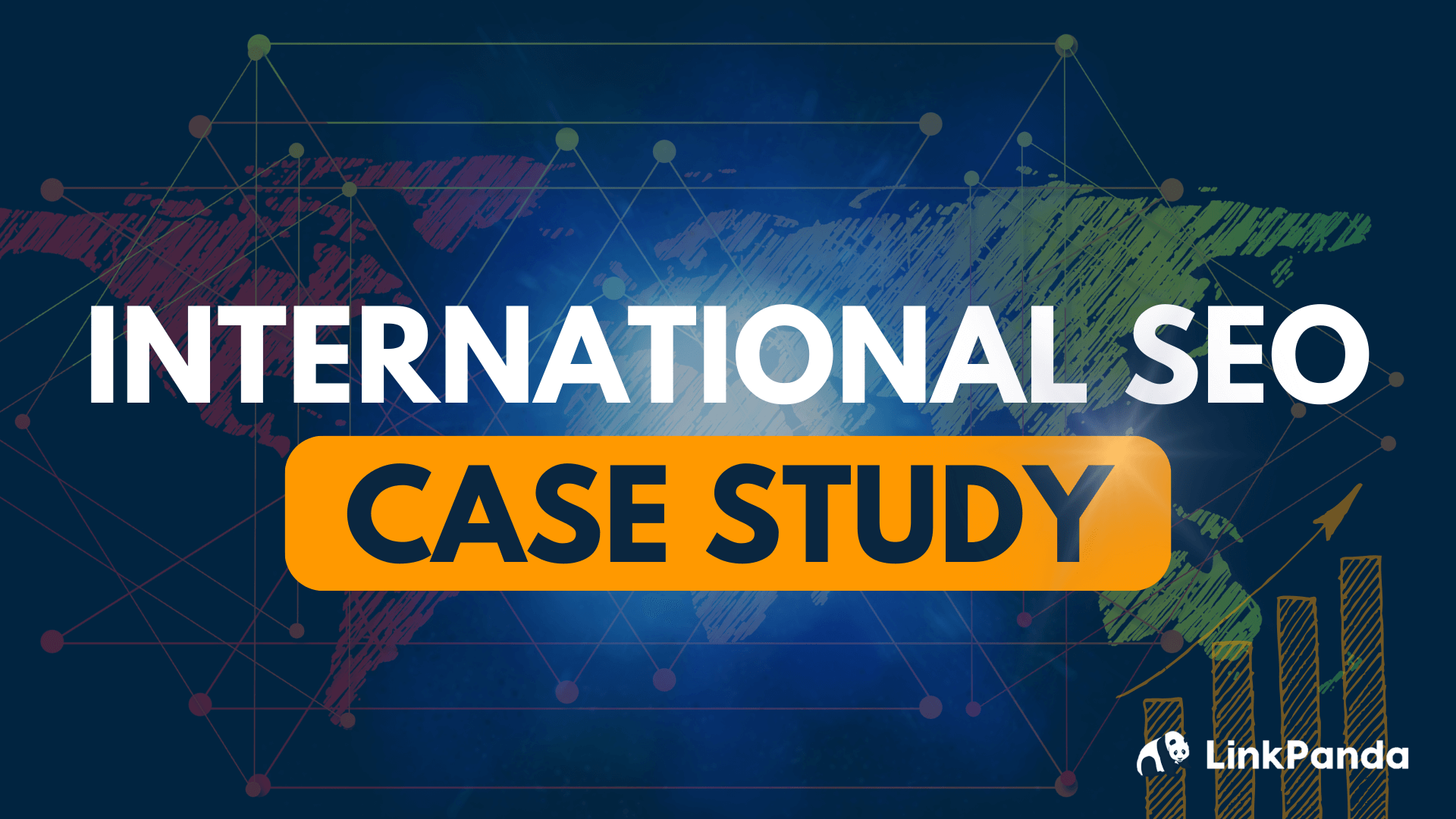
This case study explains how we grew website traffic on a B2B Software-as-a-Service (SaaS) website by 290% in 5 months by expanding in new markets, using content translations into several languages.
Growing website traffic is no easy task, especially in competitive markets like Business-to-Business (B2B) marketing software, where we are active in.
Back in April last year, our website received about 3,500 monthly visitors (most of which is organic search engine traffic).
Using the strategy explained in detail below, we took it to new heights of 13,700 visitors (+290%) in 5 short months.
The new inflow of traffic helps the website convert more traffic into sign-ups and service sales.
How did we achieve these results in such short amount of time?
The short answer is that the results were achieved by expanding website content, in massive scale.
Before you freak out that you won’t have the budget to create lots of content:
A large part of the process is automated and doesn’t require lots of resources.
The exact strategy explained below is suitable for any business that is not bound to limited geographic markets and languages.
As we are running an international SaaS website, an online form builder software, we have the capability to serve people anywhere on the globe.
This made us think of strengthening our presence in certain international markets using translated website content.
Let’s get into it!
Contents
Introduction to International Search-Engine-Optimization (SEO)
- Starting Point: Geographic Traffic Distribution
- International SEO Goals
- Understanding International Search Demand
- Mapping Languages with Target Countries
The Implementation: SEO Case Study
Step 1: Web Pages Architecture
Step 2: Content Translation
Step 3: Use Hreflang Tags Correctly
Step 4: Add Language Navigation
Step 5: Set Canonical tags
Step 6: Submit New Sitemaps to Google
Step 7: Local Backlinking
Step 8: Optimize Multi-Lingual Pages
Introduction to International SEO

International Search-Engine-Optimization (SEO) is one of few untapped opportunities for website traffic growth.
It’s a concept that often overwhelms marketers and businesses, who do not know where to start.
With the right tools and planning it’s possible to expand your web presence and rank in Google across the globe.
This article highlights the best practices for creating out an international SEO strategy including a case study of a Software-as-a-Service (SaaS) website that achieved exponential traffic growth by going international, having translated their pages into multiple languages.
Firstly, who can benefit from International SEO?
In SEO terms, going international means ranking in Google beyond your original target market. It can involve content translations into multiple language, but it doesn’t have to.
International SEO is incredibly useful for Software-as-Service (SaaS) brands, E-commerce sites and any other websites that can deliver their content, products, and services beyond a defined geographic region.
To find out whether International SEO is right for you, ask yourself 3 questions:
- Which countries does my site currently receive traffic from?
- How does my largest traffic country compare to the 2nd largest and the following ones?
- Would the website benefit from receiving traffic from other countries?
Using Google Analytics, you can understand the current traffic distribution on your website under Reports > Demographics > Overview. It’s normal to receive some traffic from various countries even if you are just operating in one country.
Starting Point: Geographic Traffic Distribution
It’s a good idea to check out the proportion of traffic each country contributes for your website. For example, if you are US-based, your United States traffic is likely making up the biggest portion, but the question is:
How much percent more than the other countries?
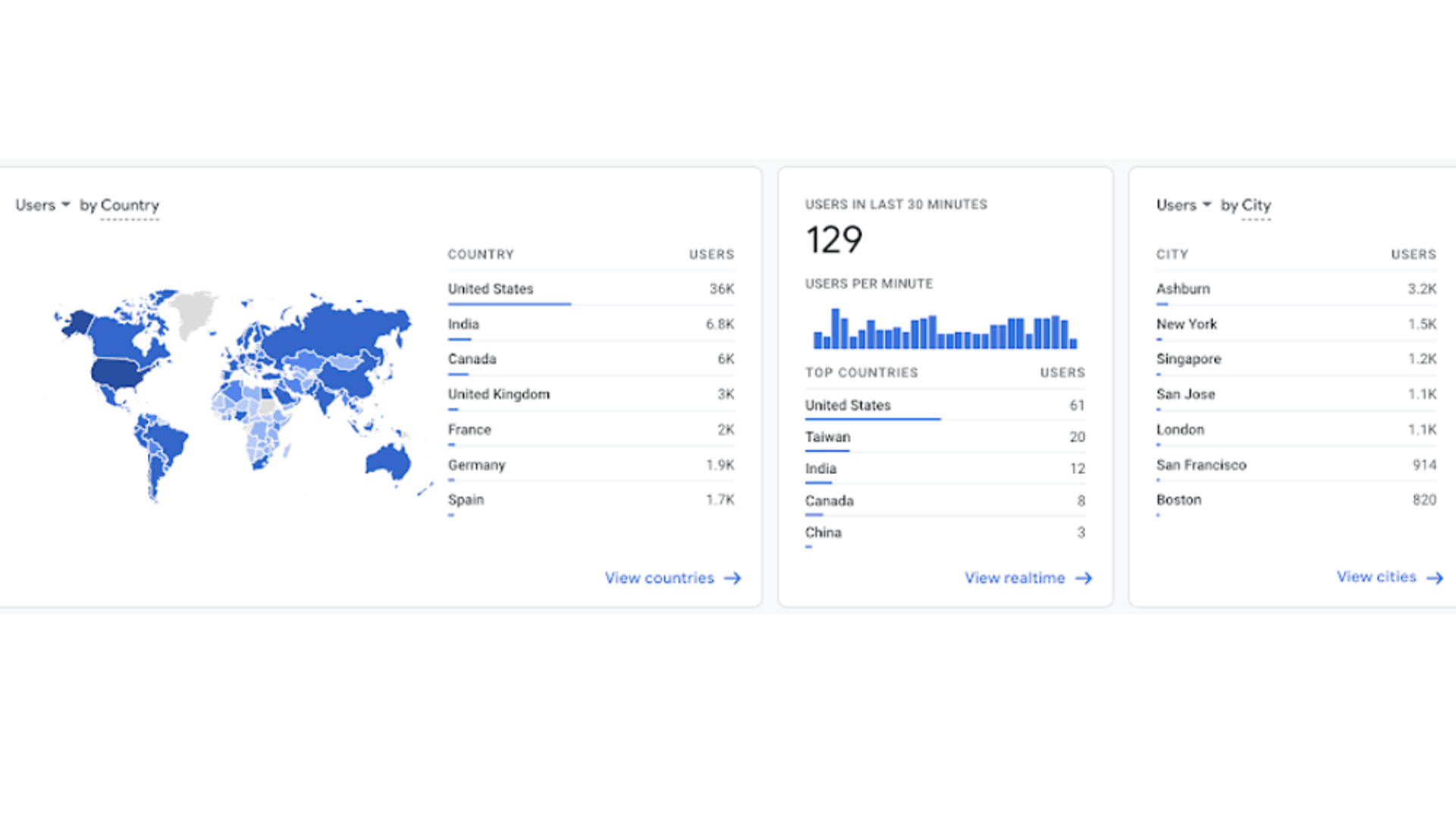
In the image above the website receives USA traffic with 36K visits, followed by the second largest traffic contributor India with just about 7K visits.
Why does it matter?
The highest performing country brings more than 5 times more traffic than the second largest country – which is quite a large difference, indicative of an unoptimized international SEO presence, not yet designed to more countries other than the primary target market.
International SEO goals
The goal of international SEO is growing traffic from more countries than your main target market.
This doesn’t mean you would neglect your core market but growing into more markets inevitably leads to traffic growth from many more countries – especially markets that have high search demand for your targeted keywords.
It is a good sign if your international SEO strategy leads to your traffic being more distributed across countries.
Understanding International Search Demand
Using Ahrefs keyword explorer you can easily check the search volume for your target search keywords across countries. The graphic below shows results for the keyword “Online forms” which is the relevant English search term for our core market United States with a volume of 1,800 searches per month.
Interestingly, also other non-English speaking countries search for the same keyword, including the Philippines and India.

Mapping Languages with Target Countries
While English keywords may be searched from other locations as well, the best growth opportunities are found in multi-lingual searches, languages other than English.
Your job as the SEO strategist for expanding globally is to firstly get a clear understanding of the keywords people are searching for.
You can do international SEO and grow in English-speaking countries like Canada, India, Australia, Ireland, etc. without content translations but your growth will hit a limit.
The big potential in international SEO is going multi-lingual.
To check the same keyword “Online forms” for the market of Germany, let’s first translate it to the German language with the help of Google translate:
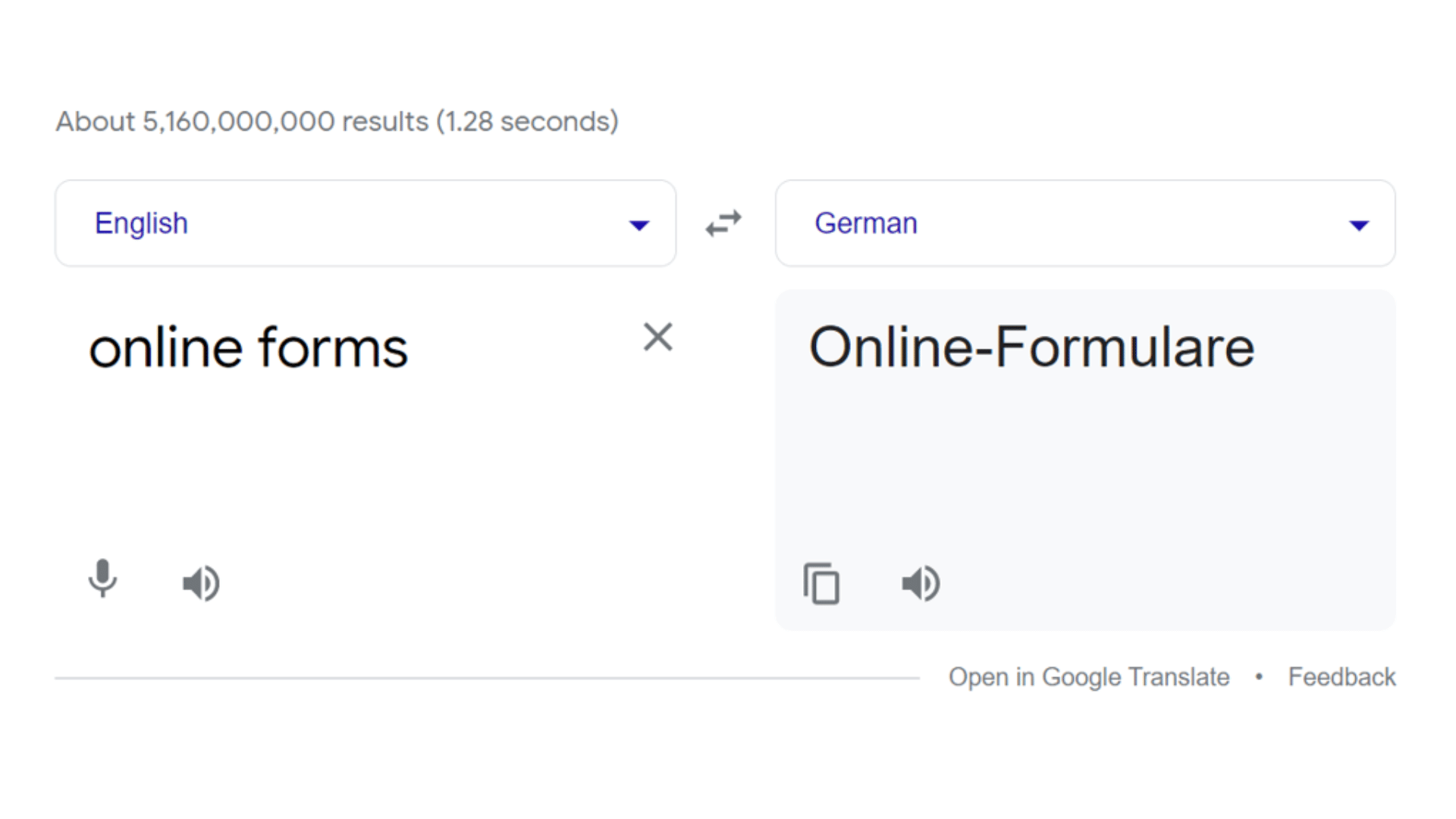
The German-speaking equivalent to online forms is “Online-Formulare”.
Let’s head over back to the Ahrefs keyword explorer to understand if there is search demand for this keyword:

The search volume shows as 150 searches/month and with traffic potential from even more countries that have German speakers or where German is also the first language like Austria.
This is just one example of an exciting opportunity for this website targeting the online forms market. Using the Keyword Explorer, you will be able to get a clear understanding of keyword searches across countries and languages.
After this research you should have clarity on:
1. Your top target markets, e.g., top 5 or top 10 countries to expand into
2. Keyword research: List of the relevant search terms for each country
3. The languages required for serving these new countries
If your business can operate fully globally as it applies for many digital businesses incl. SaaS brands, it may also be a good idea to check out the most spoken languages worldwide. This will help you understand more on the needs of multi-lingual content.
For our Online Forms website, we have decided to expand into 5 more languages besides English:
- Spanish
- German
- French
- Portuguese
- Russian
This sets the multi-lingual SEO structure and user navigation on the website, selecting between language content via country/language picker.
The Implementation:
Step 1: Web pages architecture
After planning which languages to work with, it’s time to create relevant & valuable website content. We decided to translate all existing page content instead of creating new pages, starting from about 600 webpages.
In summary, we went from 600 pages to more than 30,000 pages.
A few months after the roll out, the website has around 32,000 pages indexed, which we submitted to the index on a daily basis, with the help of the WordPress plugin called “Rank Math – Instant Indexing”.
It’s not realistic to instantly index several hundreds or thousands of web pages to Google. It takes a bit of time as Google has limited crawl resources allocated to sites. In this case, it took about 3-4 months to have nearly all new pages indexed.
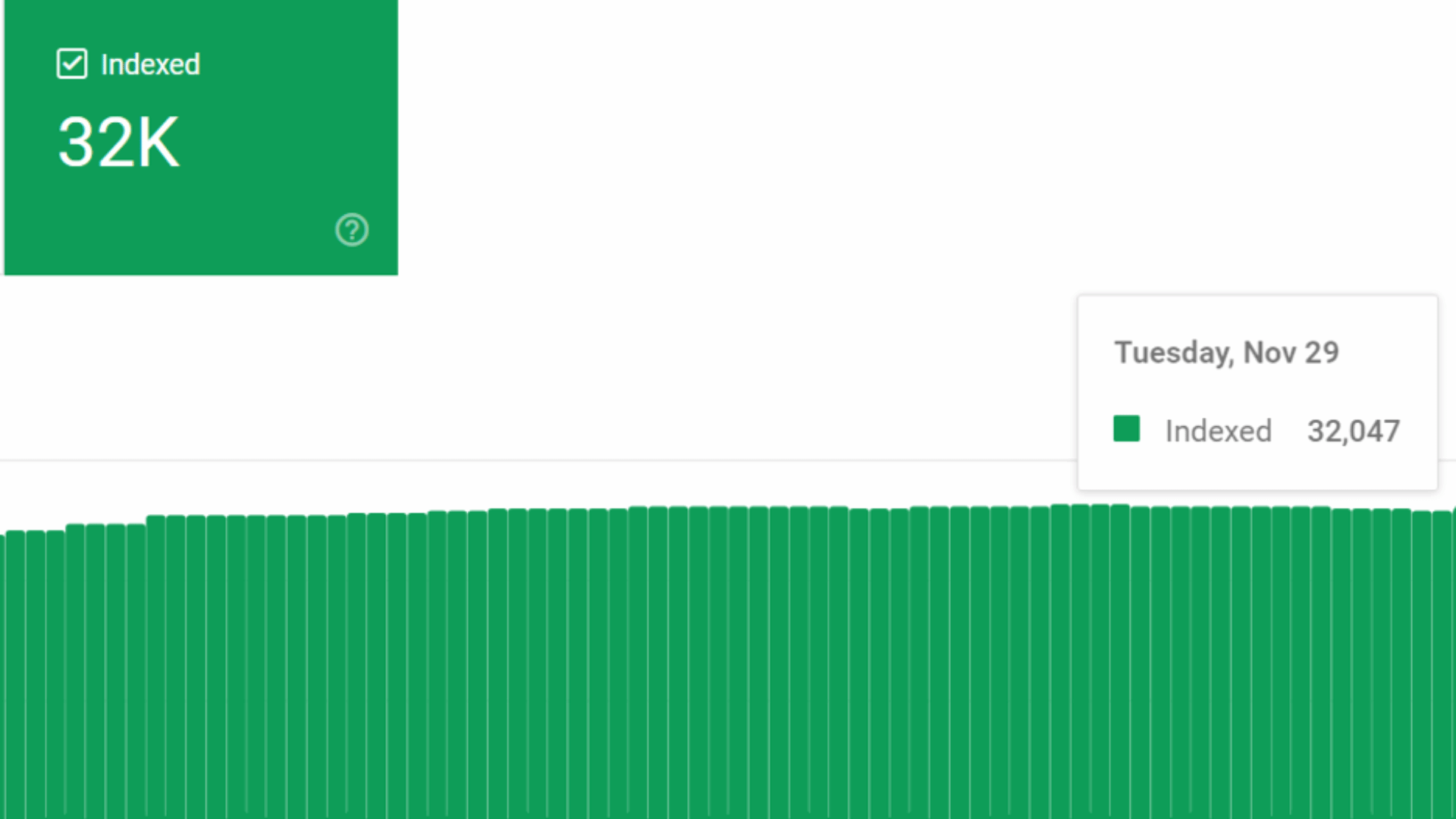
Define your URL structure
After defining the need for languages and new pages, next important step is choosing a URL structure. Expanding multi-nationally will require space for new web pages and a URL structure that can accommodate several languages in an organized way which suits search engines as well as users.
Choose one of these 3 URL structure options:
1) Sub domains: Showing multi-language content on new subdomains, e.g., fr.leadgenapp.io/ for French.
2) Sub directories: Creating new pages with sub directories, e.g., /fr /es /de after the root domain (Example /fr/features).
3) Several domains: Using several unique domains, e.g. leadgenapp.de or .es. This approach has many disadvantages and is most likely not the best option as you would start from scratch for each new domain, not gaining the benefit of multiplying pages across one domain.
We used the sub directory method, which means we created 5 new pages for each existing web page.
Step 2: Content Translation
Using translation plugins like Gtranslate, Weglot or Lokalise, the multi-lingual pages and their new URLs were dynamically generated so there was no need to set them up manually.
Depending on which software or WordPress plugin you choose to translate content, these are essential features to look out for:
- Human-level neural machine translations
- Translation of URL slug to new language
- Ability to override generated translation on pages manually as needed
- Ability to set meta title/description
Translation plugins allow you to select a variety of different languages. In our example we chose 6 languages. The website could have grown a lot more in size with more languages available.
However, you should stick to a certain limit of languages rather than adding every single available option of your translation solution.
Otherwise, your website may become difficult to maintain.
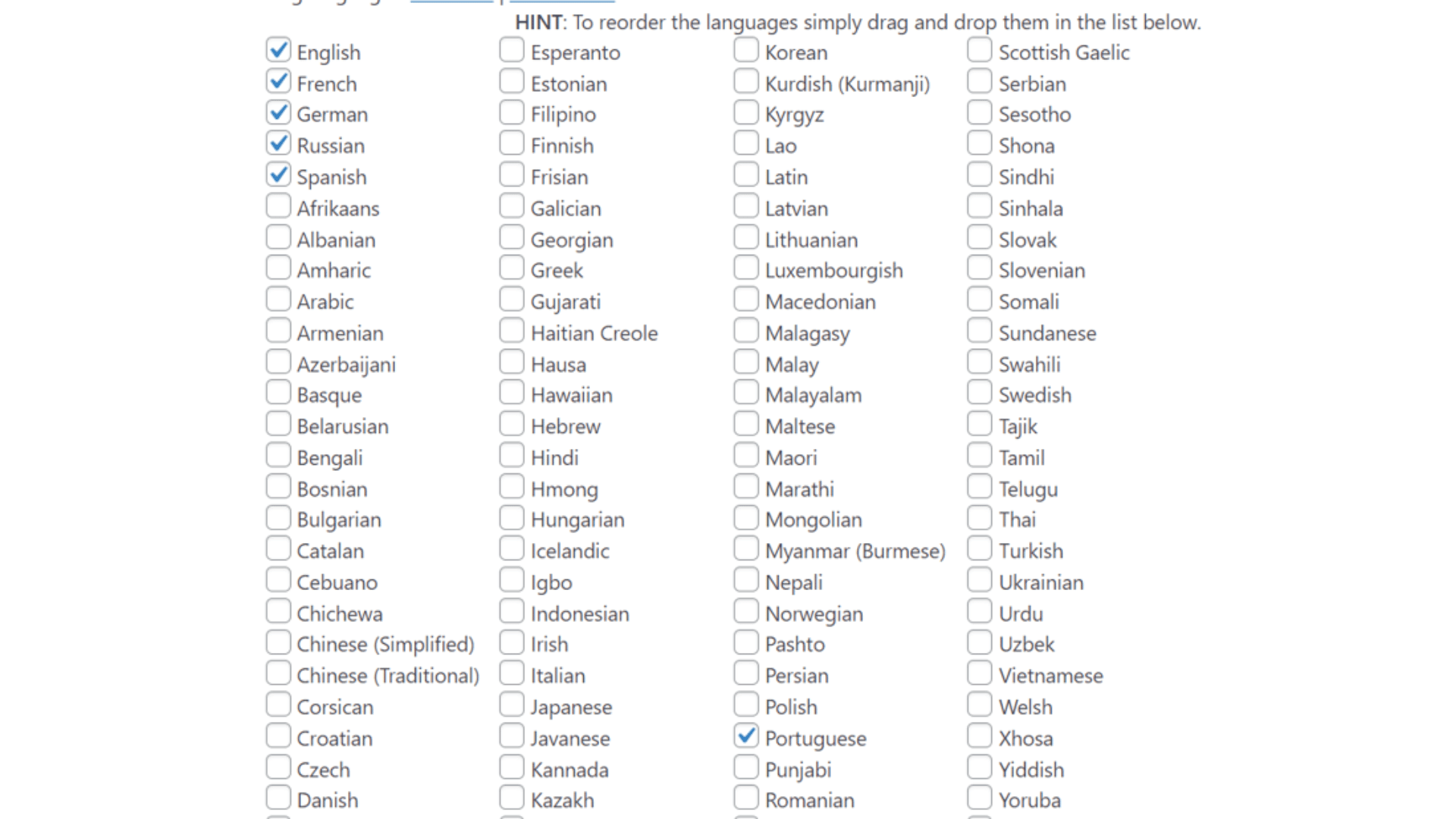
Step 3: Use hreflang tags correctly:
Hreflang tags are HTML code pasted into the head tag a page, helping Google understand your international SEO strategy and prioritizing which page to rank in a certain country.
This will help Google in returning the best language page for a certain region. These tags are your chance to easily let Google know the audiences of certain pages.
Hreflang tags are a big SEO topic on its own and require a well-thought through strategy and some developer skills to set them up properly. We learned a few lessons along the way and these are the main things to look out for:
Follow these practices when creating hreflang tags:
- Use correct region/language format: hreflang tags should include both a region tag as well as language tag. The region tag is spelled in lower case indicating the country; the language tag is spelled in all caps, referring to the language.
Hreflang “us-EN”
- Bi-directional use: With translated pages you are using the same page content multiple times, just in different languages. Supporting 6 languages including English means the homepage has now got 5 other variations.
Hreflang tags should reference the several pages between each other, so the English homepage will list the 5 other language versions of the page in its code as well.
The same applies to every other language page. Bi-directional means that every other language version should do the same and reference the various other pages between each other.
- x-default tag: Include an x-default tagin hreflang tags indicating which page URL to show in search results when the other hreflang tags do not apply.
If your main audience is English the x-default tag would be set to the root domain URLs, the respective page created in English.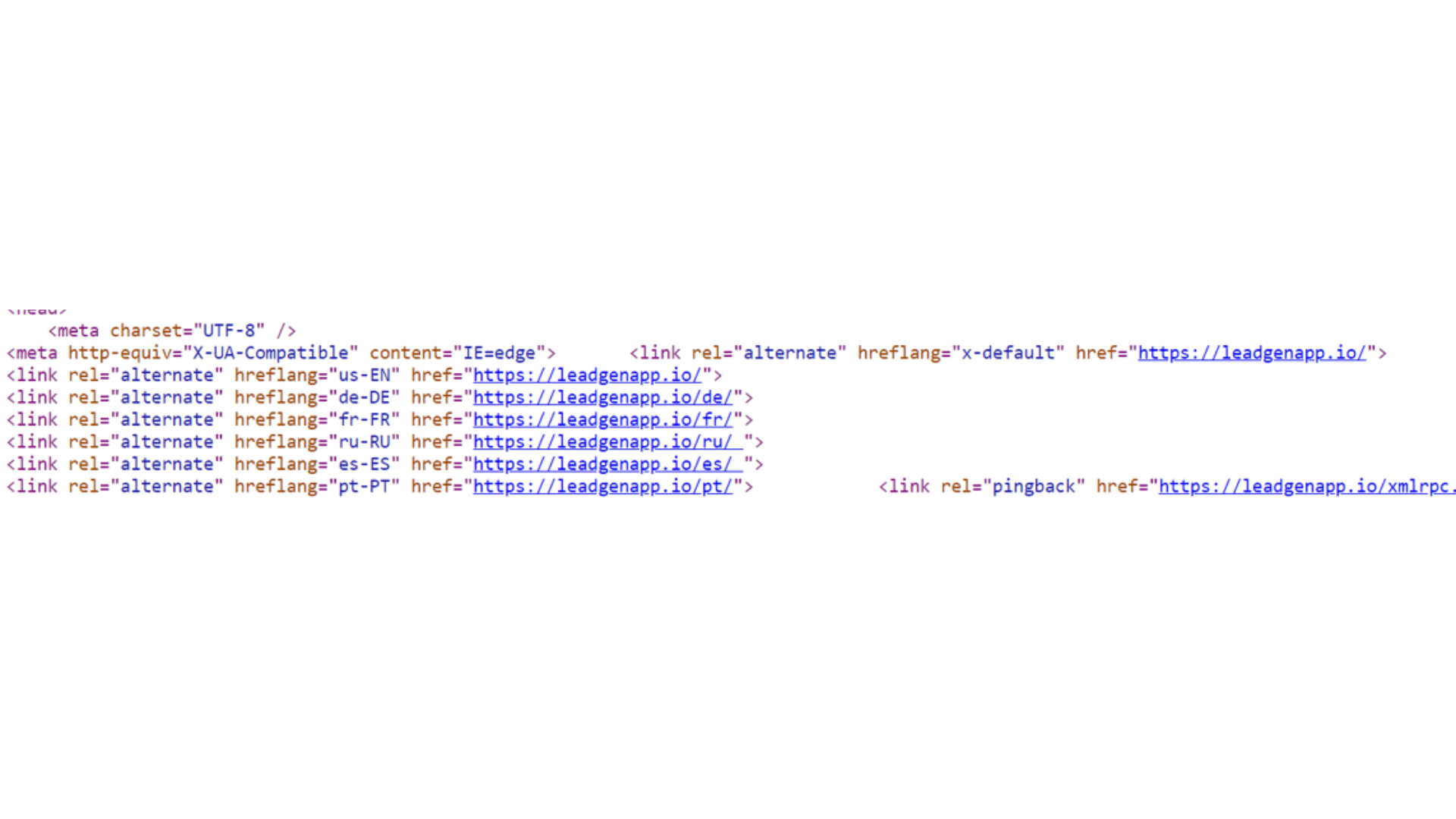
- Paste code in head section of web page
- There are different ways to add hreflang tags to your site. When choosing the method of adding code to the pages’ individual source codes, ensure embedding the hreflang tags into the head section, not the body section.
Step 4: Add Language Navigation
On your website add a language selector to your navigation header and/or footer. In the example of the SaaS website, the selector is placed on both menus, making it easy for visitors to quickly select the desired language.
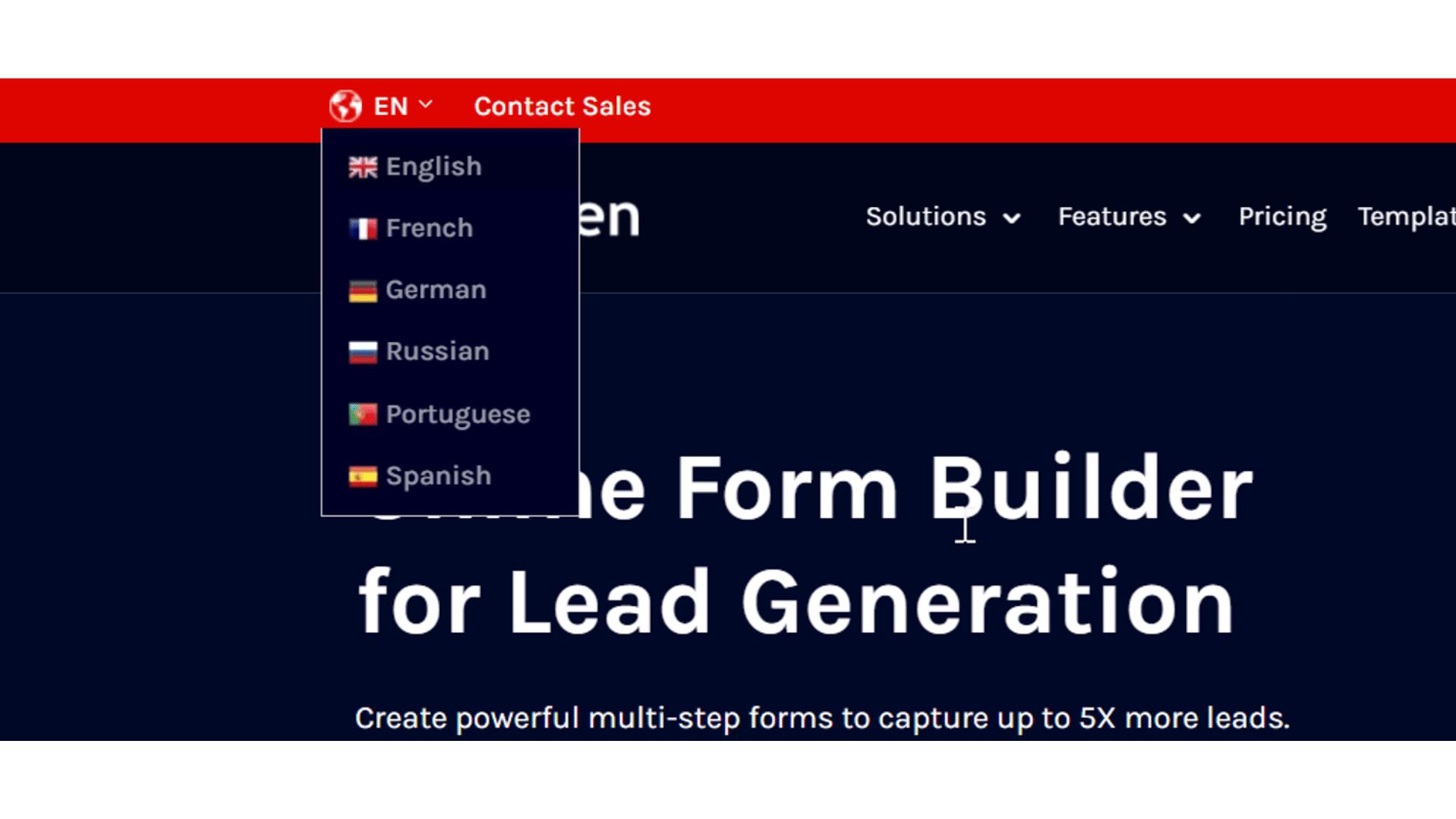
Step 5: Set Canonical tags
Add self-referential canonical tags to pages to ensure Google understands it should give the translated pages precedence over the original language page version in search rankings.
Adding a canonical tag can be powerful to prevent problems in loosing pages from the index and ensuring each page is treated individually not just as duplicate.
The Yoast SEO plugin can help you easily set canonical tags when using WordPress.
Step 6: Submit New Sitemaps to Google
Create new sitemaps for each locale and submit them to Google Search Console to get pages indexed more quickly.
You may end up having dozens of different sitemaps created, depending on the number of languages and your site structure.
A plugin like Yoast SEO can generate these sitemaps automatically, but it’s a good practice to proactively submit them to Google via Search Console as well.
The main goal of an XML-sitemap is keeping up a good site coverage of your pages in Google search and index new pages even faster.
In our example, sitemaps may have contributed to getting 30,000 pages indexed in just a few months.
Step 7: Local Backlinking
To support your international SEO growth, change your backlink generation strategy to get more regional, country-specific backlinks.
Link building is an ongoing activity and will help you solidify the rankings for your new country pages.
It’s okay to start small with country-specific links, on a one-to-one link basis. The SaaS website still has their majority of links generated from .com, as do most international websites.
The following graphic shows the top-level domains (TLDs) of referring domains the site attracts backlinks from. Links from TLDs like .ca for Canada, .de for Germany or .in for India provide valuable insight to Google that your website is getting recognized in these countries.
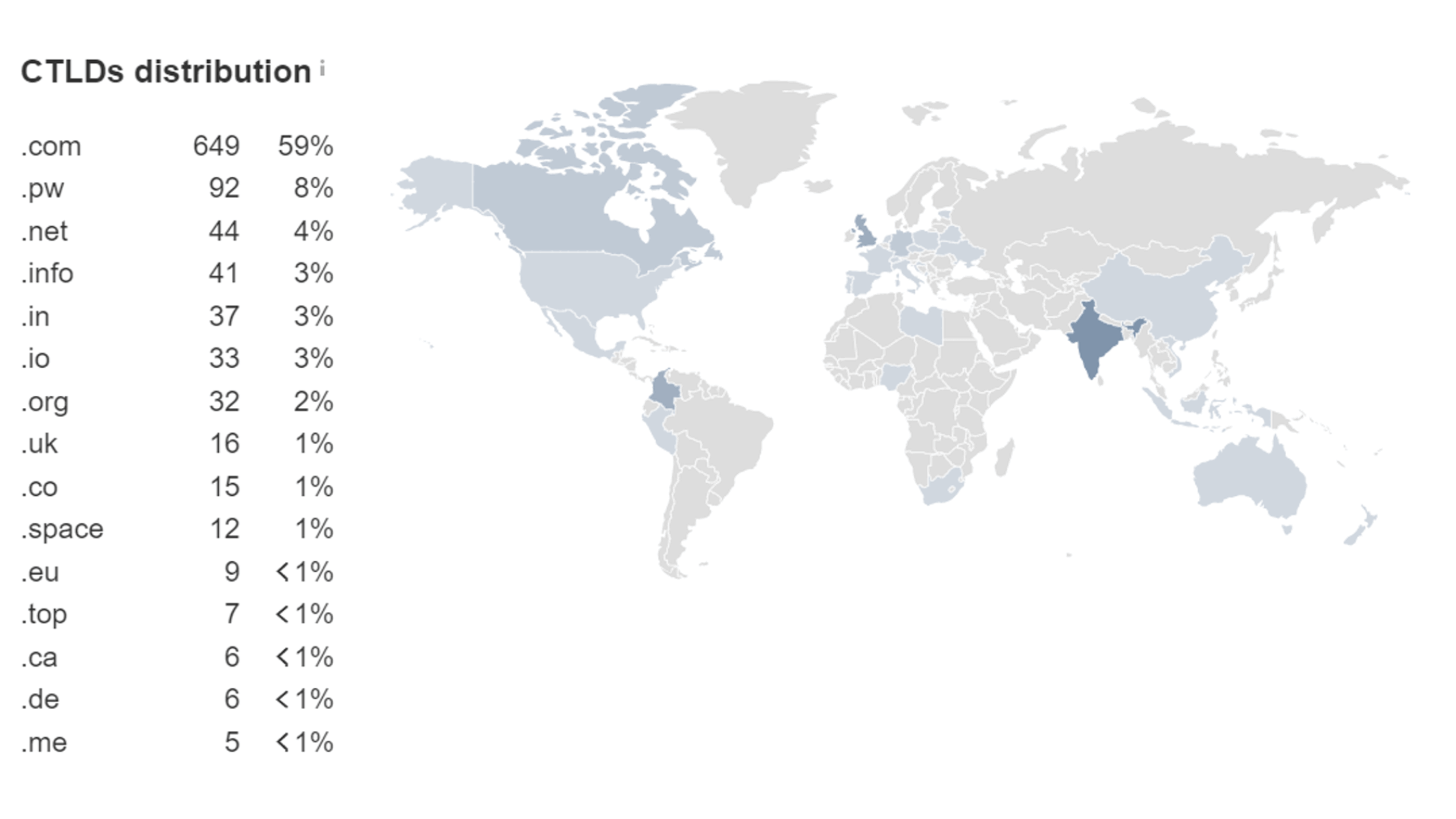
Step 8: Optimize Multi-Lingual Pages
Using the right website translation plugin you can override auto-translated content easily. Make sure that your translation solution provides this option.
While using quality translated content is often sufficient for various webpages, it will help your search rankings to manually edit the translated pages like homepage and service pages. This can be an ongoing activity, working on the most impactful pages month by month.
The Results

We followed this same process and increased website traffic by 290% comparing April 2022 with September 2022.
The above graphic shows the difference the international SEO traffic has made to gaining more traffic from other countries.
The blue bar charts represent the website traffic volume in April 2022. The orange bars show the traffic volume in September 2022, 5 months after launch.
Traffic from Brazil, Canada, France, Russia, Spain, Ukraine and other countries was almost non-existent at the beginning of the campaign. After 5 months, traffic has grown to several hundred visitors for each country highlighted above.
Traffic also increased substantially for the United States. As pointed out at the beginning of this article, the goal of international SEO should be traffic increase across various locales, so that more countries contribute to the traffic mix, but also your main market may benefit.
Final Thoughts
International SEO is a chance to get more traffic and new customers from other parts of the world, or even just from your neighbor country. There are various ways to approach international SEO, whether to include content translations and based on the number of countries to target.
The steps outlined above can provide you a step-by-step guide on how to tackle international SEO effectively, without negatively affecting your current rankings and SEO performance.
The golden rule in SEO is to create user-centric and valuable content. The same applies to growing with multi-lingual SEO.
All the steps presented above help you make content that is friendly to both search engines and users.
However, it should be stated that content quality and depth are still very important and spinning up a lot of pages if they do not provide any value is no shortcut to growth.
As you get on your international SEO journey, you will learn a lot along the way. We hope this article gives you more clarity and motivation to grow your website traffic by going global.
About The Author

Christopher Lier
Christopher is an experienced Search Engine Optimization (SEO) marketer and digital marketing specialist. He is Co-Founder of LinkPanda and leads the marketing and sales teams. Mostly known as a Software-as-a-Service founder of LeadGen App, he has helped grow the website to become a renowned player in the lead generation space with steadily growing user base and readership.


